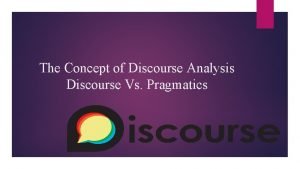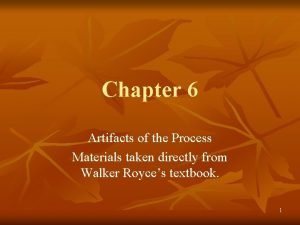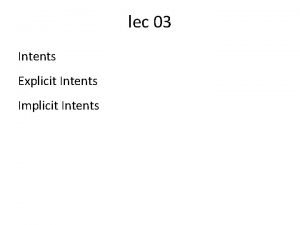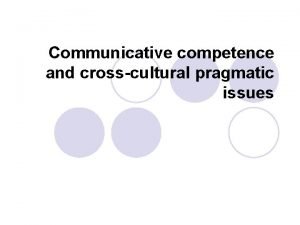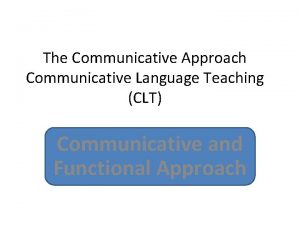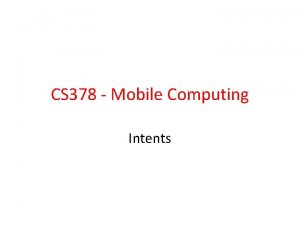Pragmatic Domains Communicative functions Intents Frequency Discourse management









- Slides: 9

Pragmatic Domains • Communicative functions – Intents – Frequency • Discourse management – Turns – topics • Register variation – Politeness – Social roles • Presupposition – Grice’s maxim of Quantity – ‘mind-reading’

Communication Development: Preverbal Use • Perlocutionary: 0 -8 mo. – No intentions – Intentions attributed • Illocutionary: 8 -12 mo. – Early intents expressed: • Proto-imperative – Expressed with • Gaze • Gestures • vocalizations • Locutionary: 12 -18 mo. – Same intents expressed – Words and jargon co-exist

Pragmatic Development: 18 -24 mo. • New discourse-related communicative functions: – Answer – Acknowledge – Add new information • Discourse management – Turns: increasing awareness of conversational obligation – Topics: 1 -2 turns/topic • Register variation – Politeness: please, whining – Talk differently to mom than dad • Presupposition – Very little

Communication Development: 2436 mo. Use • Child is more reliable at responding to conversational obligations • New discourse intents include pretending, narrating, • More flexible forms are used to achieve politeness, indirect requests • Topics can be maintained for longer • Turn-taking and topic shifting become

Pragmatic Development: School Age • Communicative functions • Increase in range of functions v. Narration v. Persuasion/negotiation • Increase in decontextualized talk • Discourse management • Requires less support from adults; still needs some • Longer turns; more turns/topic • Increased topic maintenance, fewer unrelated utterances • Smooth transitions • Decline in abrupt shifts • Greater coherence

Pragmatic Development: School Age, con’t. • Register variation • New polite forms: • permission requests, permission directives, some indirect requests • 4 -7: hints • Ability to use ‘motherese’ • Language of power, social negotiation • Presupposition • attending to listener needs • informativeness

Pragmatic Development in Later Childhood and Adolescence • Discourse Genres – Narration – Persuasion/negotiation – Exposition – Ambiguity/sarcasm • Register variation – Slang – Figurative language • Presupposition – Cohesive devices

Pragmatic Development in Adolescence: Discourse Management • Stay on topic longer • Has extended dialogues • Makes greater number of relevant, factual, new contributions to topic • Shifts gracefully from one topic to another • Adjusts the content and style of speech to thoughts and feelings of others.

Pragmatic Development in Adolescence: Persuasion • Adjusts to listener characteristics (e. g. , social status, familiarity • States advantages to the listener as a reason to comply • Anticipates and replies to counterarguments • Uses positive strategies such as politeness and bargaining • Gives up negative strategies such as whining and begging • Generates a number and variety of arguments • Controls discourse assertively
 Pragmatics vs discourse analysis
Pragmatics vs discourse analysis What is discourse analysis
What is discourse analysis God knows the thoughts and intents of our hearts
God knows the thoughts and intents of our hearts Romeo and juliet vocabulary
Romeo and juliet vocabulary Pragmatic artifacts in software project management
Pragmatic artifacts in software project management What is a conditional relative frequency
What is a conditional relative frequency Frequency vs relative frequency
Frequency vs relative frequency Form factor and crest factor
Form factor and crest factor Vmax= aw
Vmax= aw Relative frequency bar chart
Relative frequency bar chart
